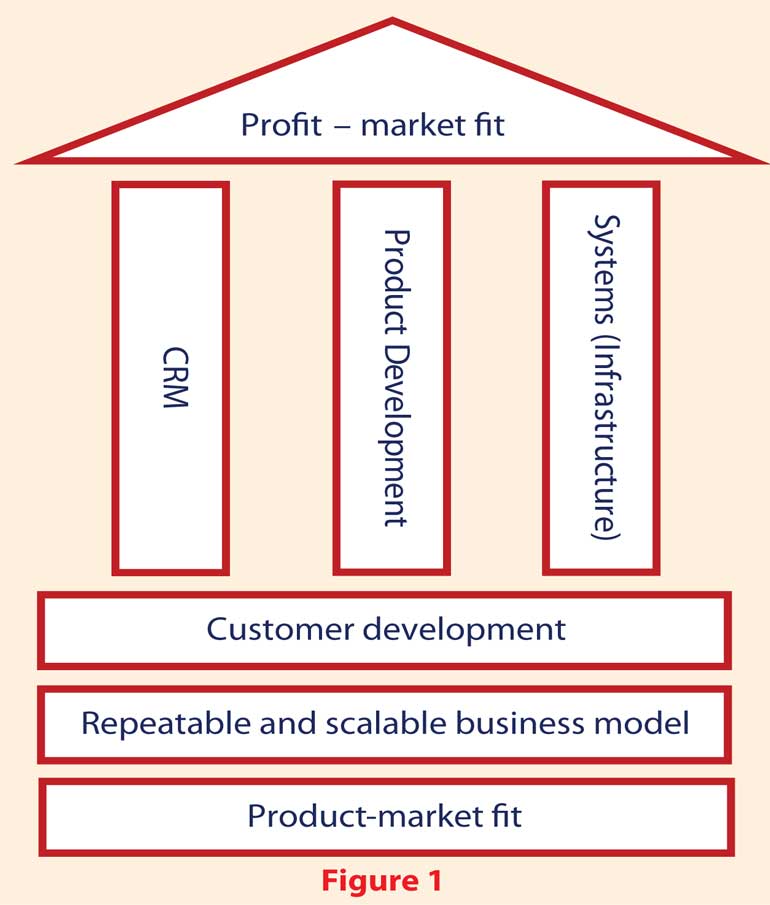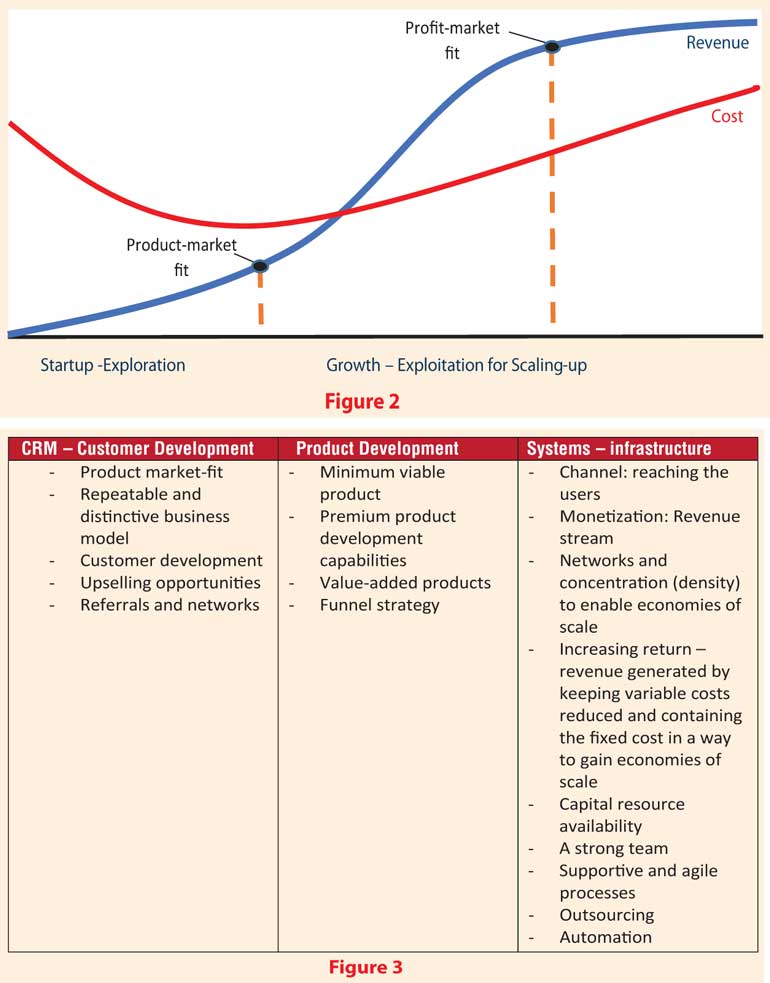Saturday Nov 15, 2025
Saturday Nov 15, 2025
Friday, 5 April 2024 00:22 - - {{hitsCtrl.values.hits}}


 Growth is the fundamental focal point behind any business decision. However, whether businesses achieve meaningful growth is the big question today. For the growth to be meaningful it has to come at a decreasing marginal cost. Meaningful growth happens only where businesses build with scalable DNA. This thinking has to be calculated into the business at the startup conceiving stage itself.
Growth is the fundamental focal point behind any business decision. However, whether businesses achieve meaningful growth is the big question today. For the growth to be meaningful it has to come at a decreasing marginal cost. Meaningful growth happens only where businesses build with scalable DNA. This thinking has to be calculated into the business at the startup conceiving stage itself.
The purpose of this article is to discuss a model that picturises how a startup gains higher scalable capabilities by carefully designing the business at the startup stage and taking a growth journey by harnessing the right trajectories. Scaling a startup means accelerating the growth with confidence and persistence at accelerating marginal return which results in a super increase in marginal revenue at less marginal cost. Once the product market fit is established the business model needs to be stretched to generate more cash by streaming more customers and more revenue at less marginal cost per customer. This requires a methodical and well-thought-out approach.
For a business to successfully scale up, there are three key pillars along which the capabilities to be developed in parallel. The following model exhibited in Figure 1 captures how organisations could develop exponential scalability right from inception with a strong foundation capable of spring out the required capabilities for scale-up. The model fundamentally talks about three key pillars of capabilities to be developed in parallel gain exponential growth via scaling up. Profit-market fit crops up at the point where the marginal cost of generating additional revenue equals the additional revenue generated.
At the beginning, startups need to match the solution to the problem and test with the target customer same to reach the product-market. Once the product-market fit achieved the business needs to focus on discovering the business model and leverage on the same towards customer development. When the customer development is taking place, the business gets into growth stage and the persistent exponential growth leads to tough the point of profit-market fit with scale economies, repeat purchases and increased volume of sales. Ideally, this is happening in the growth stage. The growth is the indication of right traction of the strategy and forms the foundation for scaling up. In fact, scalability begins with growth. The starting point of scalability is the point where the business model helps, at the growth stage, to apply the same business model to convert more of the target customers into revenue customers.
The DNA of scalability is formed by three layers the first layer is finding the product-market fit to judge the effectiveness of the value proposition, the next layer is discovering the repeatable and scalable business model and third is customer development. The bottom two layers are driven by exploratory thinking to establish the initial traction in the market to discover a repeatable and scalable business model. At the third layer, when the customer development happens, the exploration begins to couple with exploitation as the business to be taken off to next growth stage.
At the growth stage, businesses focus on developing the customers to achieve positive cash flows by discovering more customers the solution fits and repeating the same business model. At this stage, the business needs to be ambidextrous by possessing both exploratory and exploiting capabilities to adjust and repeat the business models as more and more customer feedback is obtained. The development of the team and leadership is the primary focus at this stage to stretch the business capabilities to increase revenue. The key decisions are to be driven by the cash and team as it’s very critical to generate more cash to cover the expenses and build the team to handle more and more customers and generate more revenue. The process of scaling up begins with the foundation and practically, starts to show tangible results at the growth stage as the cash flow starts to show a pattern and at some point, departs from the negative zone. The journey of the business in terms of cost and revenue pattern right from start up to scale up is well visualised by the Figure 2.
At the scale-up stage, the primary focus of the business would be on defining the industry to which it belongs. The efforts of scale-up pay more when the business works with the right suppliers, and right customers whilst having a good idea about the threats, opportunities, and competition. An understanding of the industry provides a business with an increased ability to manage risk and form super-value network ecosystems to multiply the scalability. The next challenge is creating scalable infrastructure by integrating internal teams with an external value ecosystem.
The fundamental competency required at the point of scaling up is the speed due to the dynamic nature of challenges being thrown by a volatile, uncertain, complex, and ambiguous (VUCA) environment. At the stage of scaling up, the leaders need to look forward through the windscreen much more than looking behind on side mirrors. In other words, when a business discovers the customer and business model via a thorough trial and error process, the foundation is laid strongly as the business can build on strong trajectories. In brief, the decisions about scaling up must be driven by cash, team, and speed as most of the time scaling up is all about seizing the opportunities ahead of competitors.
The journey right from discovering product-market fit to profit-market fit must be consciously designed to develop three pillars of capabilities needed for exponential scale-up. The table in Figure 3 lists some key decisive factors that drive the decisions made under each key element of the model in Figure 1.